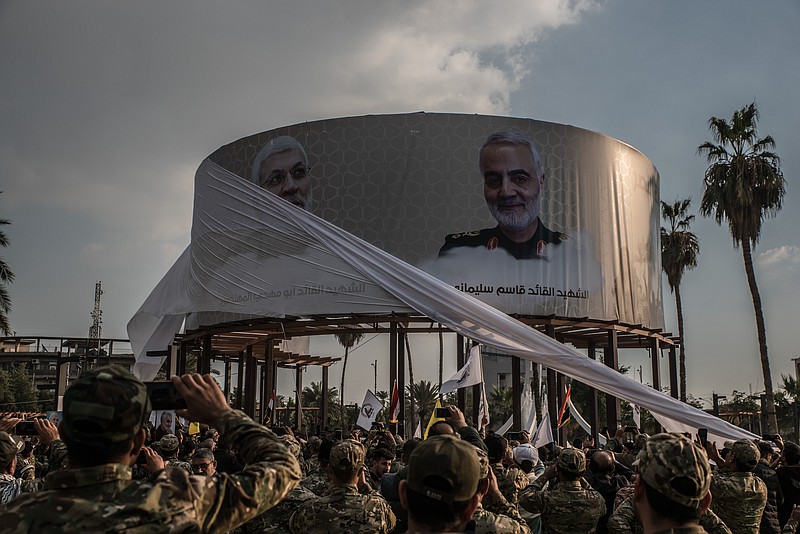BAGHDAD -- U.S. military officials in Iraq have grown increasingly alarmed over attacks by Iran-backed militias using drones to evade detection systems around bases and diplomatic facilities.
In place of rockets, militia members have turned at times to small, fixed-wing drones that fly too low to be picked up by defensive systems, military officials and diplomats say. An official with the U.S.-led coalition described the evolving drone threat as the military mission's biggest concern in Iraq.
In April, a drone strike targeted a CIA hangar at the airport complex in the northern city of Irbil, according to officials familiar with the matter. The drone's flight was tracked to within 10 miles of the site, but its path was then lost as it moved into a civilian flight path, the coalition official said.
The drone's remains were partially recovered, and preliminary analysis suggested it was made in Iran, a coalition official said. The attack was said to deeply concern White House and Pentagon officials because of the covert nature of the facility and the sophistication of the strike.
Although no one was harmed, the incident prompted a long night of deliberations over how to respond, according to Western officials. Some U.S. officials -- including the National Security Council's coordinator for the Middle East and North Africa, Brett McGurk -- advocated serious consideration of a military response, said two people familiar with the matter. The Biden administration ultimately decided against taking military action.
A similar drone attack in May on the sprawling Ain al-Asad air base raised concerns among coalition commanders about how militias are adapting their tactics, according to officials and personnel on base.
"The damage wasn't huge, but the coalition were very upset. They told our commanders that it was a major escalation," said an Iraqi soldier stationed at Ain al-Asad, speaking on condition of anonymity because of the sensitivity of the situation. In January 2020, Iran targeted the base with ballistic missiles in response to the U.S. assassination of an Iranian commander, Maj. Gen. Qassem Soleimani.
Rocket attacks by Iran-backed groups have at times killed American servicemen and Iraqi security personnel and civilians, prompting retaliatory military action from the United States and pushing the U.S. and Iran to the brink of outright conflict on Iraqi soil.
Although tensions have cooled since President Joe Biden took office, officials worry that future attacks still risk sparking a new cycle of violence as Iran-backed groups try to push the coalition force out of Iraq altogether.
Iraqi pressure on U.S. and other coalition forces to withdraw surged last year amid anger over the Trump administration's decision to kill Soleimani and Iraqi militia leader Abu Mahdi al-Muhandis using a drone strike.
U.S. troop levels have fallen roughly by half since then, in part because Iraqi security forces are now taking the lead in rolling up what remains of the Islamic State. But American numbers have also declined in response to increasing rocket attacks, which left some commanders describing their soldiers as sitting ducks. There are now about 3,000 coalition troops in Iraq, including 2,500 Americans.
In the absence of effective defenses, the drone threat now raises the prospect of a sudden escalation of violence. Each attack triggers a flurry of communication as U.S. officials seek to determine whether Americans have been killed or injured.
"The death of an American is their red line," said one Western official, speaking on condition of anonymity because of the sensitivity of the issue. "The first question the Americans always ask is: What was the casualty's nationality?"
The top U.S. military commander in the Middle East, Marine Gen. Frank McKenzie, said last week that efforts were underway to develop better defenses against the drones. He said military officials were looking for ways to cut command-and-control links between a drone and its operator, improve radar sensors to quickly identify the threat as it approaches, and find effective ways to bring the aircraft down.
"We're open to all kinds of things," he said. "Still, I don't think we're where we want to be."
Information for this article was contributed by Mustafa Salim of The Washington Post.
